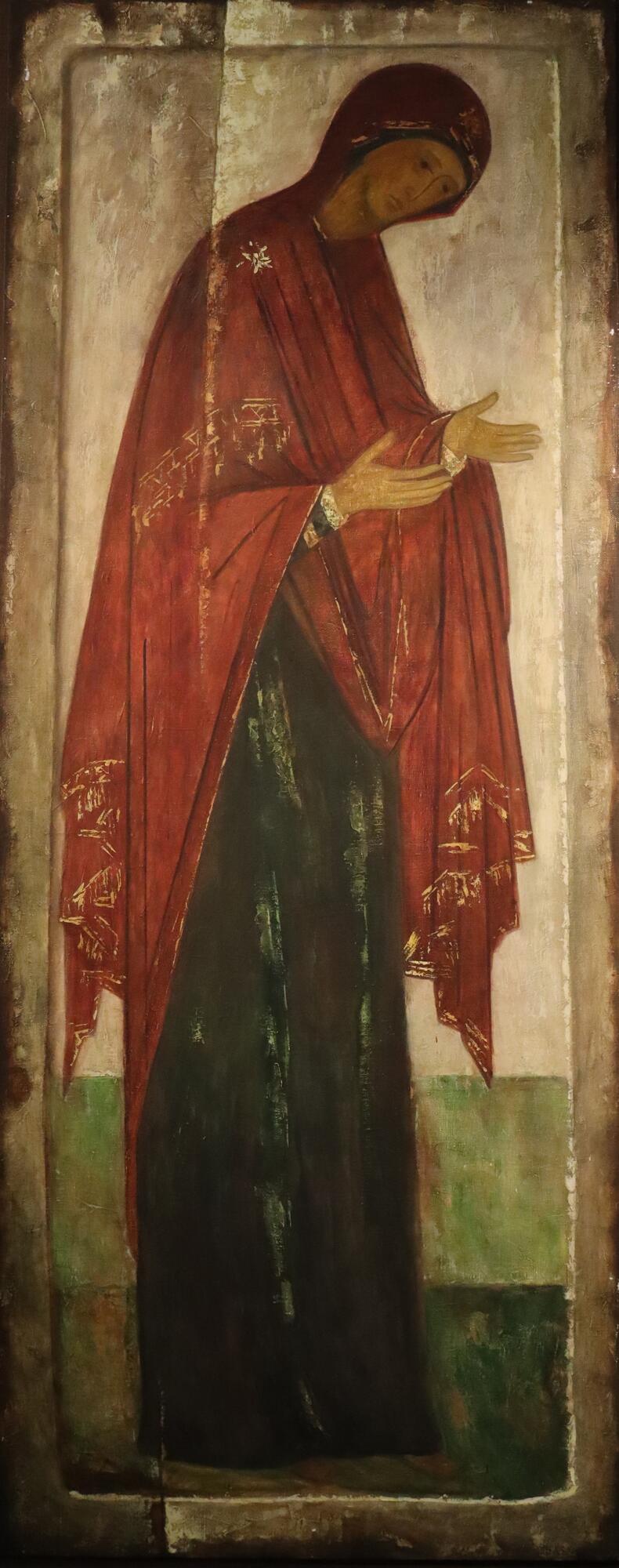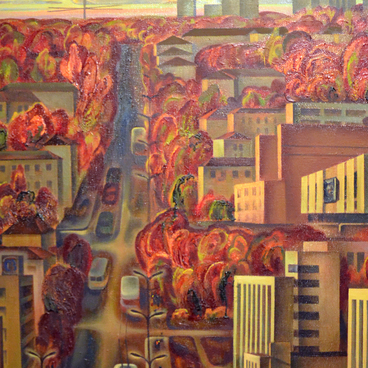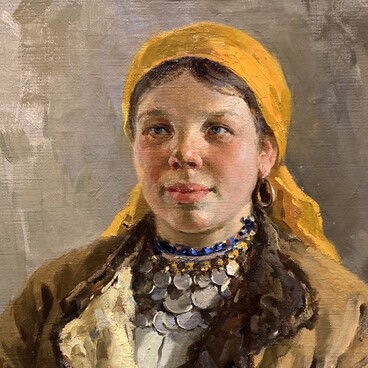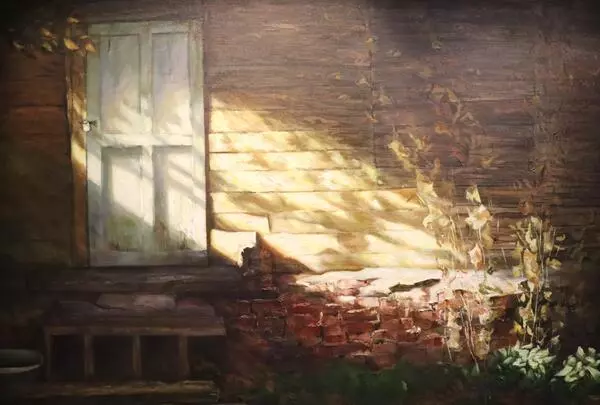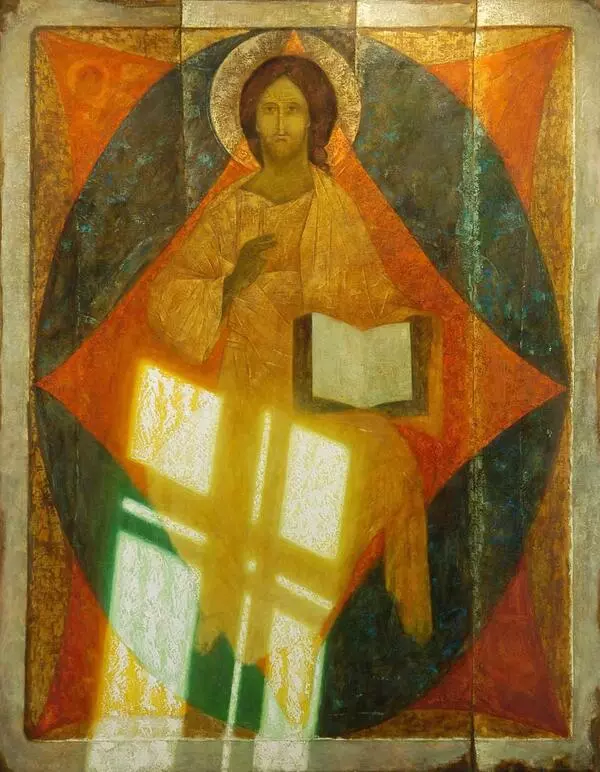People’s Artist of the Republic of Mordovia, painter and restorer Stepan Korotkov was born in 1956. He graduated from the Saransk Art College in 1981. He studied under Marat Shanin and Evgeny Nozdrin, the classics of Mordovian fine art. He is known for his large-scale canvases based on biblical subjects. In his oeuvre, we can observe a wealth of significant Christian images: the Mother of God, the Archangel Michael, and George the Victorious. In these works, the artist turns to the spiritual and moral origins, and expresses the ideas of the inviolability of eternal values. In 2010, Stepan Korotkov was awarded the Silver Medal “Spirituality. Traditions. Mastery” by the Artists’ Union of Russia.
The 2006 canvas “Virgin” is the left part of the triptych “In Memory of Andrei Rublev”. When creating the triptych, Stepan Korotkov followed a composition known as Deesis. The Deesis is a specific arrangement order of icons in the iconostasis. The image of Jesus Christ is in the center, to the left is the Mother of God, and to the right — John the Baptist. They are flanked by the images of the Archangels Michael and Gabriel, the apostles Peter and Paul, and then by icons of saints.
In this work, Stepan Korotkov adheres to the established canon. In the central part of the triptych, Christ blesses people with his right hand; in his left he holds the Book of Life, in which God records the names of people who are destined for the Kingdom of Heaven. The face of Christ is turned to the viewer.
The artist depicts the famous biblical images, and embodies in this triptych the idea of a spiritual path and enlightenment. The image of the Mother of God is one of the most fundamental images in Christianity: She is the main defender of humanity. The Mother of God is to the right of Christ, looking at the Son of God, instead of the viewer, and praying for the salvation of all people.
Olive, ocher, cherry and golden tones are a tribute to the tradition of icon painting. The artist carefully studies and conveys the features of the Old Russian icon. In particular, in the left part of the painting, the joint between the two boards is articulated by pictorial means. Wooden boards served as the most frequent foundation for icons, the use of several boards was common for icon painters.
At the same time, the artist does not imitate the icon. He creates a picturesque monumental image of faith and the light of the soul.
The 2006 canvas “Virgin” is the left part of the triptych “In Memory of Andrei Rublev”. When creating the triptych, Stepan Korotkov followed a composition known as Deesis. The Deesis is a specific arrangement order of icons in the iconostasis. The image of Jesus Christ is in the center, to the left is the Mother of God, and to the right — John the Baptist. They are flanked by the images of the Archangels Michael and Gabriel, the apostles Peter and Paul, and then by icons of saints.
In this work, Stepan Korotkov adheres to the established canon. In the central part of the triptych, Christ blesses people with his right hand; in his left he holds the Book of Life, in which God records the names of people who are destined for the Kingdom of Heaven. The face of Christ is turned to the viewer.
The artist depicts the famous biblical images, and embodies in this triptych the idea of a spiritual path and enlightenment. The image of the Mother of God is one of the most fundamental images in Christianity: She is the main defender of humanity. The Mother of God is to the right of Christ, looking at the Son of God, instead of the viewer, and praying for the salvation of all people.
Olive, ocher, cherry and golden tones are a tribute to the tradition of icon painting. The artist carefully studies and conveys the features of the Old Russian icon. In particular, in the left part of the painting, the joint between the two boards is articulated by pictorial means. Wooden boards served as the most frequent foundation for icons, the use of several boards was common for icon painters.
At the same time, the artist does not imitate the icon. He creates a picturesque monumental image of faith and the light of the soul.
